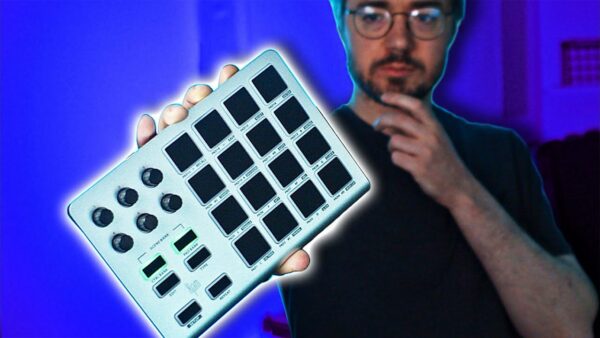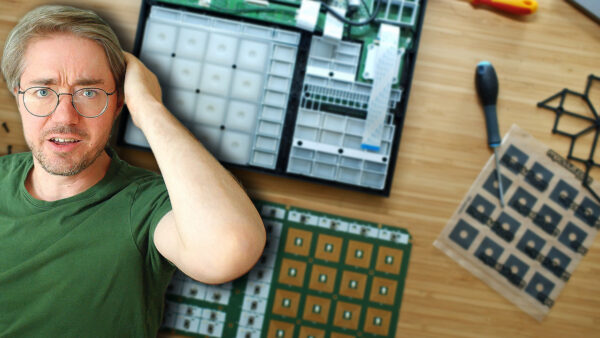5 ways latency will mess up your groove
Latency is public enemy number one for us finger drummers. Here are 5 ways it can occur. Some of these are pretty obvious, some quite obscure. At the end I provide a golden tip on how to circumvent all latency confusion when working on your timing.
1. Buffer size
This is the most obvious one of the bunch. In order to achieve inaudible latency when playing a sampled instrument such as drums, you need a quality dedicated audio interface that allows you to set your audio buffer size very low. How to do this depends on the audio interface you’re using, but since it’s one of the most important settings for any dedicated audio interface it should not be a problem for you to figure out how to do this with your equipment. A general rule of thumb is to get your buffer size smaller than 128 samples. However, some sound card manufacturers mess with this setting and have you believe you can set a buffer size as low as 32 samples, when they actually include an extra ‘safety buffer’ of 64 samples that’s unchangeable. Therefore a 128 sample buffer size could actually be more than 128 samples because of this safety buffer. Kinda sneaky. Another way to look at it is in terms of milliseconds. Most DAW’s have a little information screen that tells you what the current latency is in ms. Make sure your total output latency isn’t more than 6ms and you should be fine.
2. Plugins in your DAW
When you’re building a song inside a DAW (digital audio workstation, like Ableton, Logic, ProTools or Cubase), make sure you don’t use any plugins in the signal path while tracking your drum parts. If you smack a multi band compressor on the master bus for example, you can count on it that this plugin needs at least 20ms to process everything that goes through it. Since it’s on the master bus that includes your drum track, you’ll end up with an audible delay and a shitty groove. Try and keep the signal path 100% clean and only use your software drum instrument while recording a finger drumming performance. My DAW Cubase actually has a cool feature called ‘constrain delay compensation‘ which actually temporarily cuts out all plugins out of the signal path of tracks that are record enabled at that time. That’s a nice feature for when you have to record some extra drums halfway through a project and there’s already a lot of plugins present in your mix.
3. Effects in your drum software
Your software drum instrument itself can also process the sound in a way that will confuse your inner clock. The most obvious one is a delay effect. If you put a delay on your snare, it’s probably still possible to time it right, since you hear both the real snare hit and the delay that follows, but let’s say that it can cloud your judgement a little bit and confuse you from time to time.
Another type of effect that’s used on drums a lot, but can have an impact on your timing is a transient shaper. You can use this to alter the beginning and the end of a sound. When used to alter the end of a sound it’s probably not much of a problem, but when you would set the transient shaper in a way it makes for example your kick drum attack ‘softer’ that might result in a slight delay every time you hit a kick drum, which then leads to you hitting the kick drum pad a little early and make the beat sound rushed.
4. The room mic
Most virtual drum instruments have a ‘room’ mic. This is basically a simulation of a microphone that’s at least a few feet away from the drum kit that records the sound of the drumkit in the room. When you have a lot of room sound in your mix, chances are you’re getting thrown off by the delay of the room mic. The speed of sound is actually pretty slow. It travels at 343 meters per second, which means that every 34 centimeters adds one millisecond of delay. So, if a room mic is 5 meters away from the sound source, it will pick up the sound about 15 milliseconds after it is played. So, when you’re finger drumming and the room mic is one of the loudest sounds you hear in your drum mix (not always the case) you might notice all the drum parts you record are rushing a little bit. That’s the result of you hearing your own drum kit from 5 meters away as if you’re playing it with super long sticks :-). So, my advice is to keep your drum sound a little dry when recording to help you with your timing. You can always add in a lot of room later on while mixing your track.
5. The distance to your speakers
This works the same way as the virtual room mic, but this time it’s in a real room. Every 34 cm between your ears and your speakers will add 1ms of delay, so if you’re sitting far away from your speakers this can have an effect on your timing. The problem here is that when you hit a pad on your pad controller, the note registration is basically instantaneous while your ears hear the result a couple of milliseconds later. This again creates rushed drum parts when listening back. Make sure you sit close to your studio monitors when recording or use headphones to minimize this type of natural latency.
* The golden tip: Unplug it!
I also tell you this in the free courses on this website. When practicing your timing on a pad controller, turn off the sound regularly and just listen to the actual sound of your fingers hitting the pads. This is a great way to recalibrate your inner clock with the real world. Great drummers can hear timing differences of a few milliseconds. For me the audible treshold seems to be between 4 and 8 ms, so all latency above that range will throw me off one way or the other. I use this trick a lot to reconnect with reality every time I get lost in midi-limbo.




